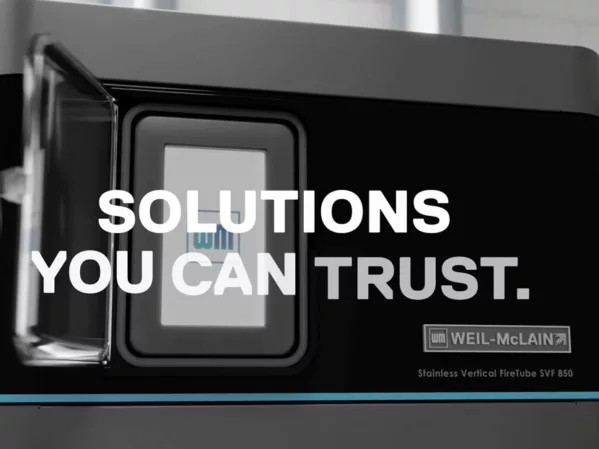These are strange times, indeed. With so many unprecedented challenges in the last two years, I might be getting a bit jaded and reserved. Of course, I am a proud member of Generation X, so cynicism irritation at world lunacy is part of my DNA.
The challenge du jour is the current labor crisis we seem to have found ourselves in. You know it’s getting bad when my typically optimistic marketing group wants to discuss strategies to recruit new talent. Not that they shouldn’t participate in this effort, but it is not something they are typically bringing to the group.
My business coach — and yes, I do have one — referred to our current situation as “the mass resignation” in North America. A bit dramatic, but we all seem to thrive on catchy expressions to help make sense of difficult situations.
Let’s face facts. We have a broken supply chain causing undue stress on our internal associates. We have unparalleled demand from our customer base. There is a battle raging between remote and premise-based work environments. Is there any wonder why our associates are reexamining their career choices? In the meantime, we have a business to run and markets to serve.
While I could certainly spend some time waxing on about recruitment and retentions, I would like to focus this column on how we can better use technology to help mitigate this labor shortage.
It is no secret that distributors underuse the capabilities of their enterprise resource planning (ERP) systems. By some estimates, this percentage can be as little as 15 percent of the features and functions. This has got to stop. We paid for the whole enchilada. Let’s use as much as we can.
This lack of usage is highly prevalent in the procurement and management of inventory. Over the years, our teams have created elaborate workarounds because they are unwilling or unable to use the system as intended. No system is perfect. And sometimes systems include glaring flaws in their logic, but let me make something very clear, their odd methodology is typically the result of user influence. Hundreds and hundreds of users.
How arrogant would we be to state that our method is superior to the collective wisdom of all these users?
Learn how to make the software do the heavy lifting. Populate the fields and tweak the settings so that the suggested purchase order is in alignment with what you would have come up with had you slogged through your laborious process.
These manual gut-feel methods take labor hours. Teaching the madness to a team of others will cause rampant expansion of labor hours. Coming full circle, we don’t have the luxury of wasting labor hours anymore. Take a look at the process and determine what parts should be delegated to the software, and what parts can only be accomplished by a human.
Evolution of Customer Contact Tools
As I was thinking about the functional areas of our organizations, I could have lumped sales and marketing together. That would be lazy and rocket us back to the last century. Newsflash — sales and marketing are two separate disciplines. In the marketing arena, we have several tools to help produce touchpoints without having to physically push the buttons.
Having spent the better part of 25 years married to a brilliant marketing professional, I have had a front-row seat to the evolution of customer contact tools. I have worked with a few, but I must admit that I fall way short on utilization.
Email and social marketing tools, if set up right, can automate campaigns designed to follow leads and get that audience to take one more peek at your company.
What happens when someone clicks on a link in an email generated by your campaign? Is the click sent to a human to follow up? Or is a drip campaign created to prod that potential customer through the sales funnel? What happens to a “like” on Facebook? Are we nurturing that impression?
While I am a novice in this arena, I know there are levels of automation that reduce the need for human intervention.
E-Commerce Complements the Salesforce
Here comes the meaty one — sales. There are several ways to augment our sales efforts without having to apply labor. For years, we threw bodies at lagging sales revenue. We had them to throw. If our compensation was set up favorably, it didn’t cost us much to put feet on the street.
Today, we don’t have that same luxury. E-commerce has helped us add to our traditional salesforce. Rather than a replacement, I see companies treating their web stores as another branch or salesperson. A subset of your customer base will never respond to an e-commerce offering. Don’t try to jam it down their throats. For those existing or yet to be discovered buyers, we need to up our game.
Many companies are doing amazing catch-up work in this arena. Don’t get caught in the “Field of Dreams” trap — “If I build it, they will come.” Before you build it, take time to ask your customers what they want in an e-comm platform. Survey first, spend second.
If you are trying to get new customers to swim up to the boat, get educated about SEO (search engine optimization) and SEM (search engine marketing). Paid placement works. It doesn’t do you any good to be relegated to page two.
RFID Boosts VMI
For those of you who deploy customer vendor-managed inventory (VMI) programs, there are new technologies to help you strip out the labor hours involved. A VMI program typically involves a number of your SKUs housed in bins on a customer site. My preference is the customer buys the initial stock; consignment is a lessor option. The site bins have an agreed-upon min/max of quantity.
It is common that a distributor salesperson visits the site and does a periodic inventory in order to build a replenishment order. While this is a nice way to stay in front of the customer, it is labor-intensive. In the past, ERP-connected vending machines were all the rage, but the return on investment was seldom realized — someone still had to replenish the device.
When sites became restricted in 2020, these programs really suffered.
Today, there is a new technology using radio-frequency identification (RFID) that boasts contact-free VMI. It was born out of an industrial distributor and is poised to revolutionize this labor-intensive sales strategy. If you send me a nice note, I will steer you in the right direction.
AI and Data Collection
Now more than ever, data is king. Distributors have been struggling with how to best use the massive amounts of data our ERPs collect. In the early part of the century, we referred to the process as data mining, but it relied on examining historical data to see what happened. Today, we have moved beyond the historical BI (business intelligence) arena and have access to futuristic AI (artificial intelligence).
I recently did a podcast with Proton AI founder Benj Cohen. He explained that AI doesn’t just rely on historical ERP data, but takes an omnichannel approach to the collection of inputs to form predictions on sales opportunities. Think about integrating the inputs from your marketing efforts, sales communication, ERP transactions and web analytics. Will these insights make it easier for your sales team to discover opportunities?
Before I leave the sales arena, I want to share an off-the-cuff comment by my younger brother. He doesn’t read any of my stuff anyway, so I can talk about his distribution intelligence. When I asked the title question about technology mitigating labor challenges, he gave me an oldy but a goody. He reminded me that call routing could help employ customer service associates more effectively.
When you have multiple locations, think about how many customer service hours are spent waiting for a call to come in. This is a tremendous underutilization of talent. Call routing can help mitigate associate absences or shortages. Do customers really care where they are calling if they get the answers they need?
Accounts Receivable/Payable Automation
I’m in deep now, so I better keep going. Let’s jump over to the accounting side. I have recently been exposed to some of the automation and labor savings available to the sales completion process. For those of you not used to my verbiage, I am referring to accounts receivable. There are services to help automate the process of sending invoices and collecting payment.
Furthermore, these service providers offer options to automate the past due notification process. Many of the credit managers I meet with monthly use some form of automation to augment the receivables process. These services often jump the fence over to the payables side. Worth exploring unless you prefer adding bodies to your accounting team.
In a recent post by my friend Bruce Merrifield, more than 10 million job openings are listed in the United States, and around 9 million people are unemployed. I’m no math major, but even I can see that we don’t have enough people to meet demand.
As distributors of products, we are the backbone of this great economy. We need to deliver. By breaking out of our current paradigm, the one where we throw bodies at demand, we can meet this challenge head-on. See what’s out there and get creative. You might even have some fun doing it. I am always here to help.




